Summer in Baja must sizzle, but in winter it’s a lovely place to visit. We last talked about La Paz and environs. Now we’ll head south yet again and round the tip before heading north toward home.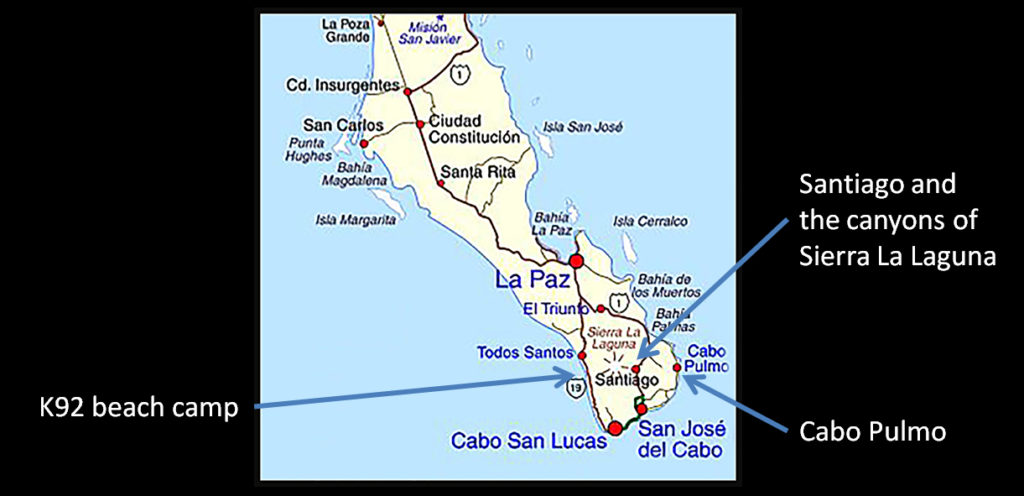
Took a look inland at the mountains… to Sierra La Laguna which has the highest rainfall numbers in all of Baja. The rivers coming out of these mountains still run, even in dry times. There are several through trails across the top for sturdy hikers.
Start in Santiago, a sweet little town that has a gorgeous lagoon in the middle that no one can use or see, except from above. Seems like a no-brainer to capitalize on their lagoon, but they don’t. The proprietor of Hotel Palomar, Sr. Gómez, speaks English and will draw you a valuable map of the nearby canyons: Cañon de la Zorra (Fox Canyon) and Cañon Dionisio. Be sure to eat in his courtyard restaurant. He offers camping there also.
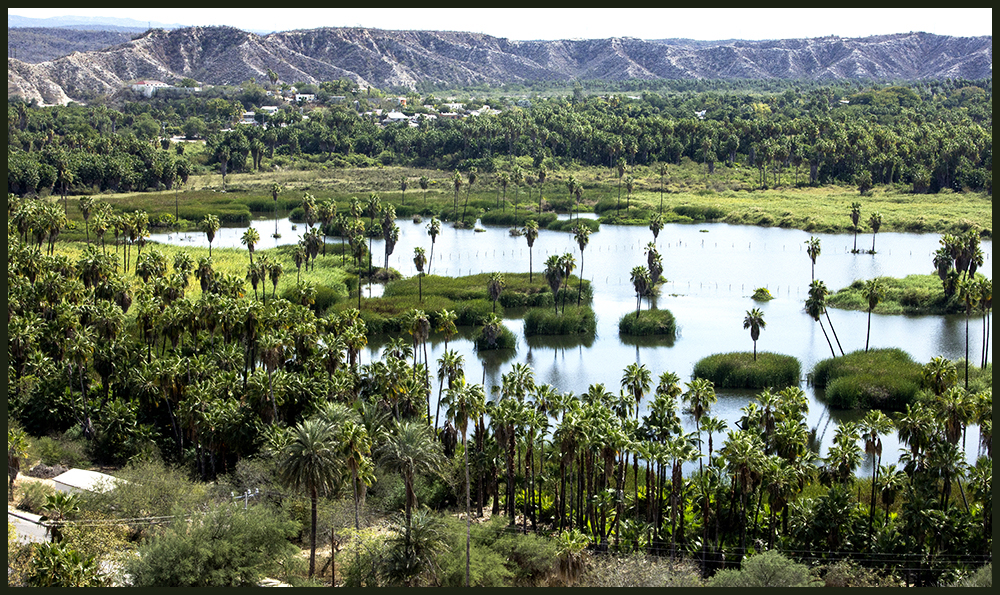
Laguna de Santiago
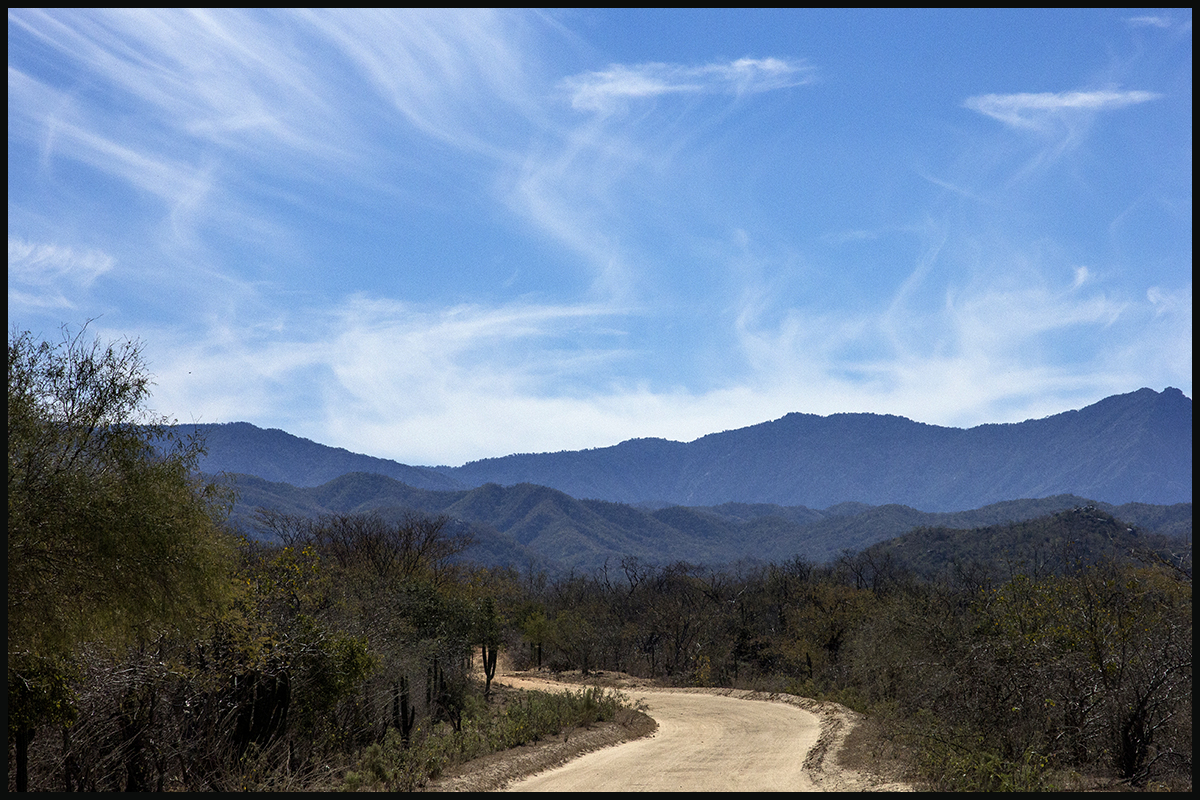
Road into Sierra de la Laguna
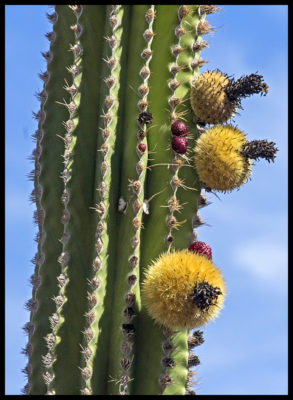
Finally we see the fruit and flower of the Cardón cactus

Ash-throated Flycatcher
On weekends Fox Canyon is too busy so we tried another canyon, Dionisio, and quite literally stumbled into Rancho El Refugio, a marvelous ranch oasis where they run cattle and goats, but are very interested in nature. The son, Rogelio, recently finished his degree in philosophy. The canyon is gorgeous and they have a 387 year old Asian fig tree (as calculated by students from Japan) planted by the original padres. They allowed us to camp for a few days until a large bird-watching group arrived.
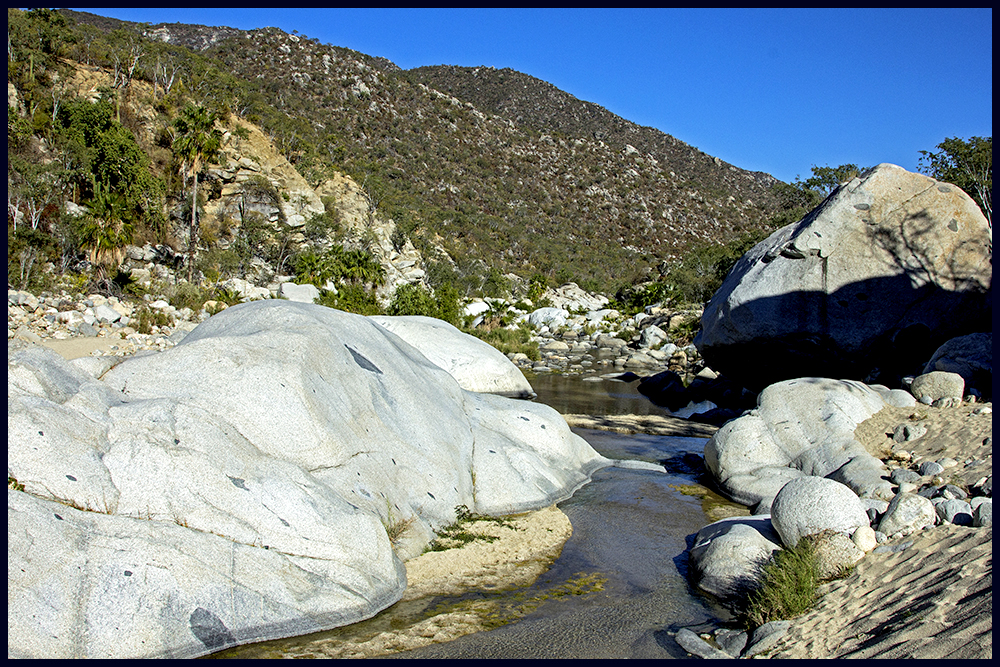
River through Rancho El Refugio
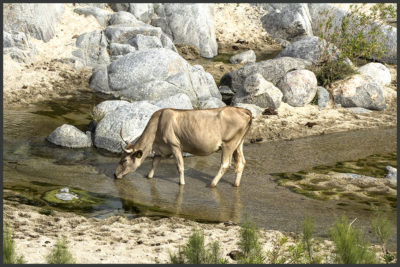
Why the river water isn’t drinkable.
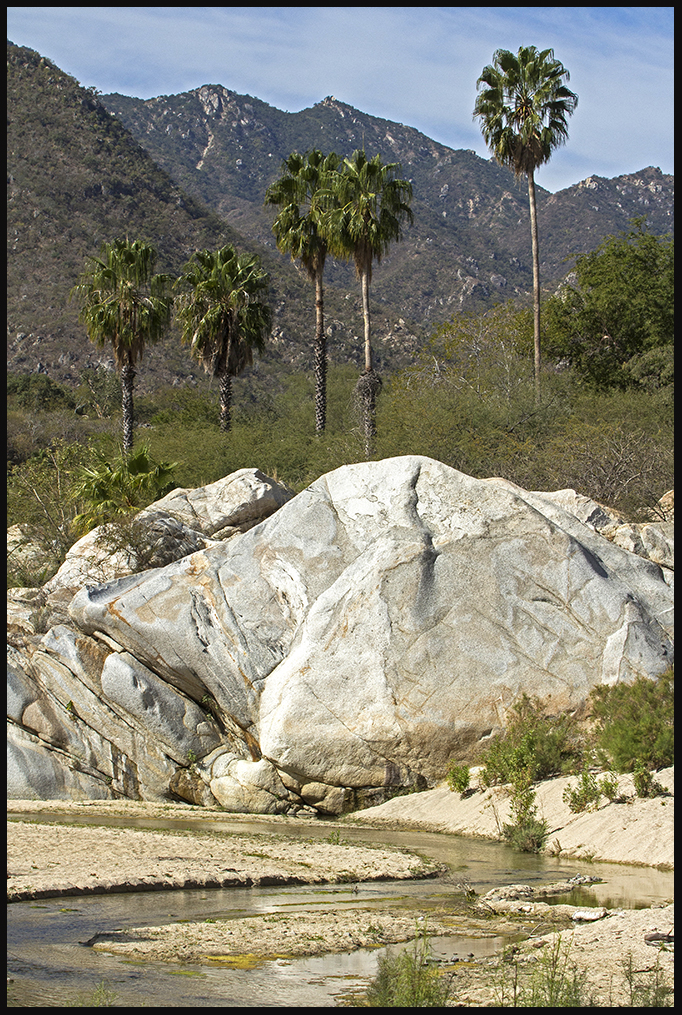
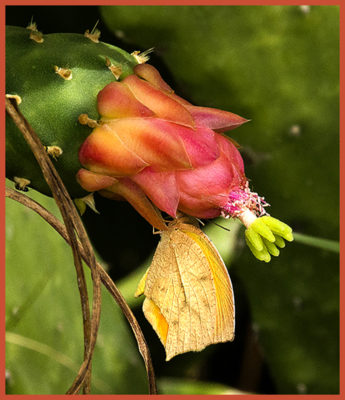
Butterflies were scarce on this trip.
Mid-week it was safe to venture into Fox Canyon. There is a campground there and a long trail up the seemingly uninhabited valley. There were some cowboys coming down, picking their path through huge rocks, riding the smallest of horses.

Wonderful rocks with inclusions.
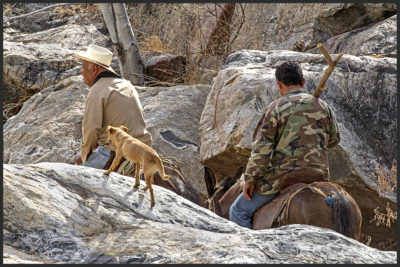
Cowboys in Fox Canyon
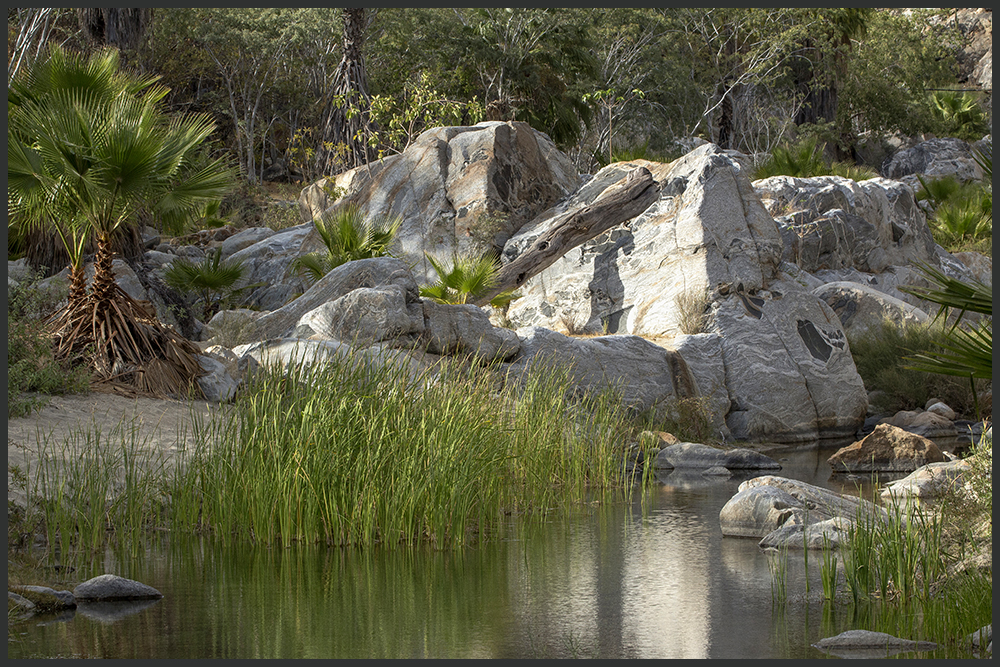
Our private swimming hole in Fox Canyon
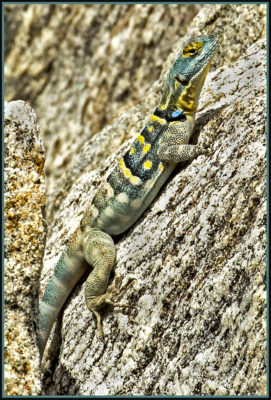
San Lucan Rock lizard
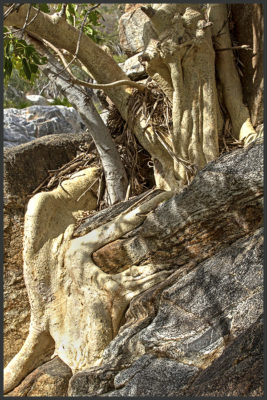
Fig clinging to rock. The imported figs have been planted everywhere by birds.

Popular falls of Fox Canyon
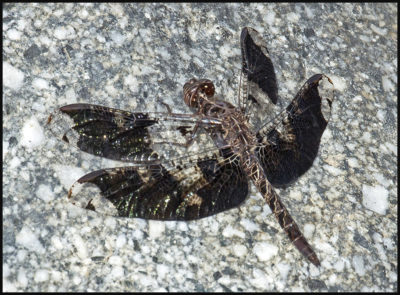
Riverside dragonfly.
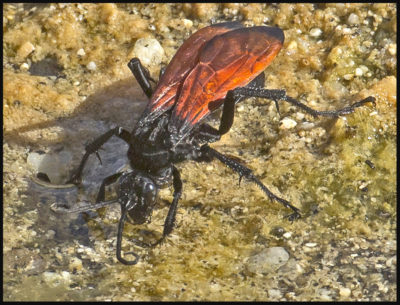
Colorful wasp
Back to the coast and down the dirt road to Cabo Pulmo, reputed to be the best reef snorkeling in Baja. It will have to remain reputed because the wind never stopped blowing. The town is small and relies on divers for their existence. Every business caters to them.
After waiting 3 days in our free camp spot for the wind to quit, we gave up. In the interim we did go beach combing and saw Mobula Rays with 17′ wingspans leaping out of the gulf waters. They are similar to Mantas but leap frequently. The picture is an internet one, I didn’t get a shot.
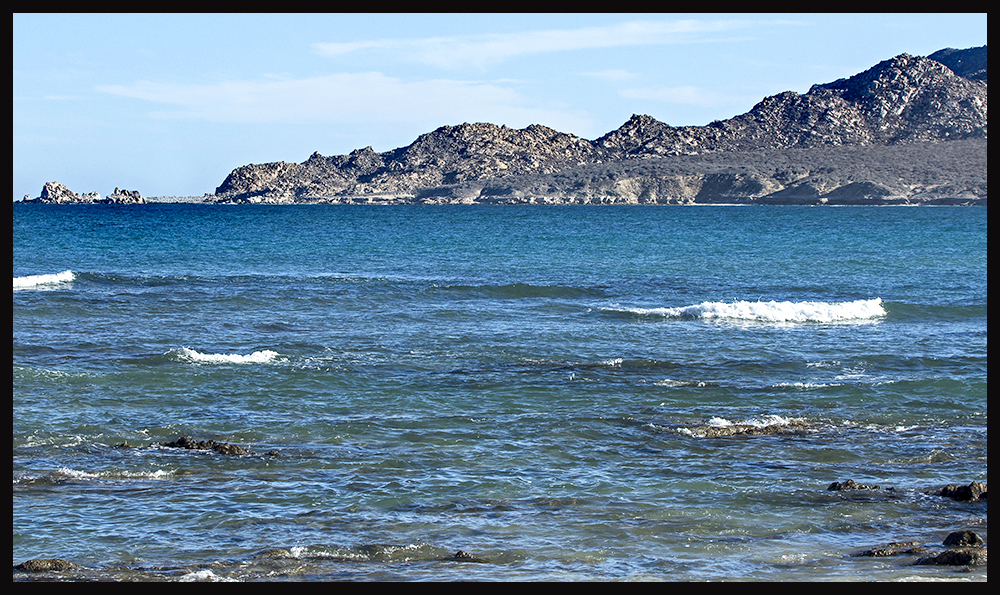
Bay at Cabo Pulmo
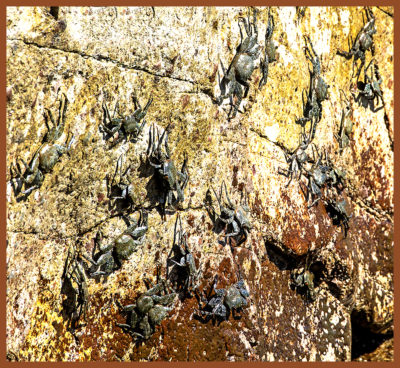
When the waves recede hundreds of crabs come out on the rocks.
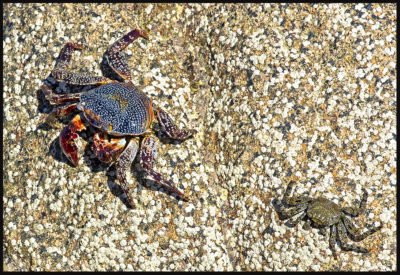
Sally Lightfoot crabs come in many color variations.
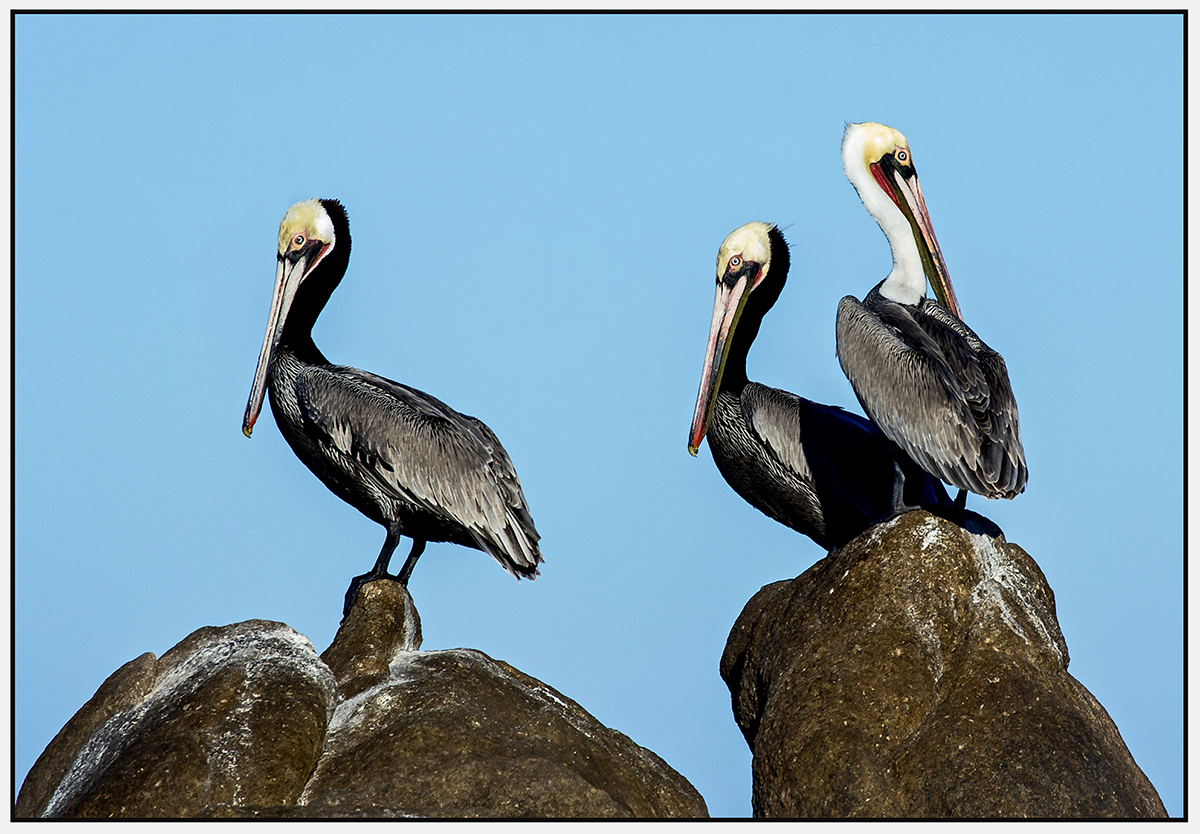
Pacific Pelicans posing.
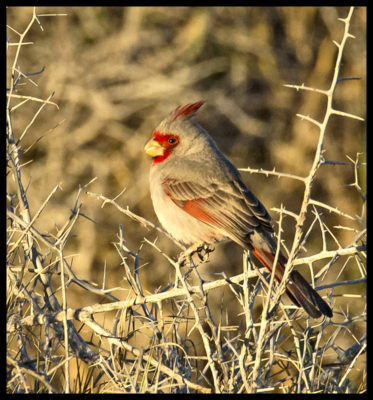
Flocks of Pyrrhuloxias hid in the beach scrub.
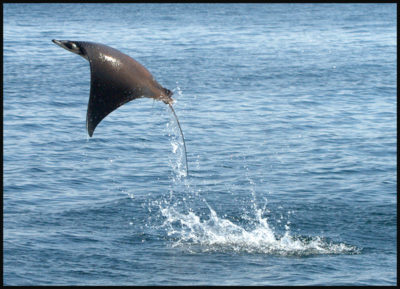
Mobula Ray jumping. Also called flying rays.
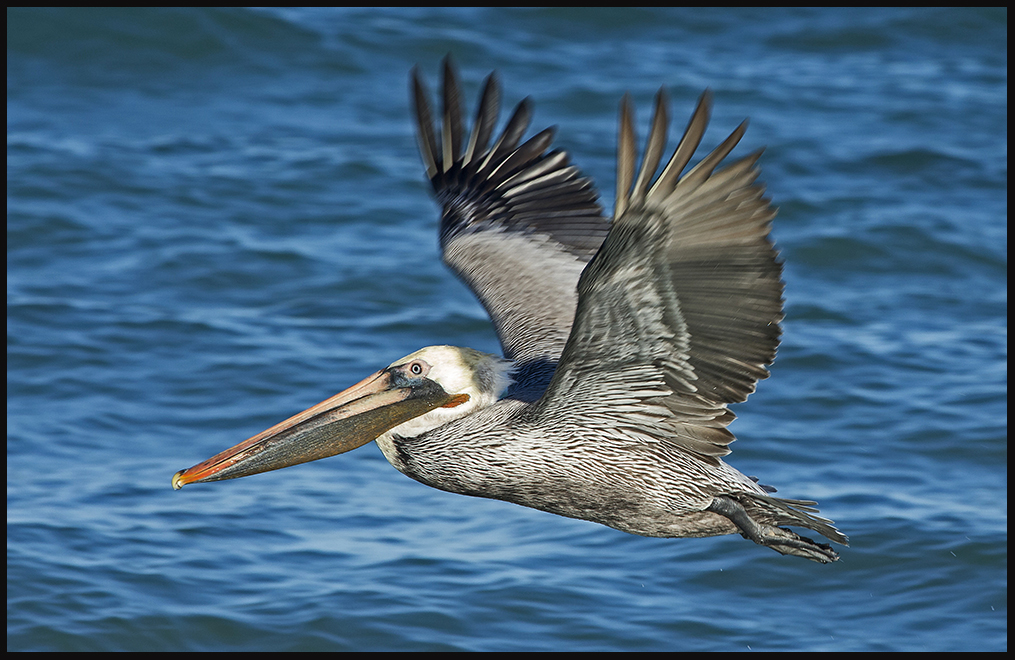
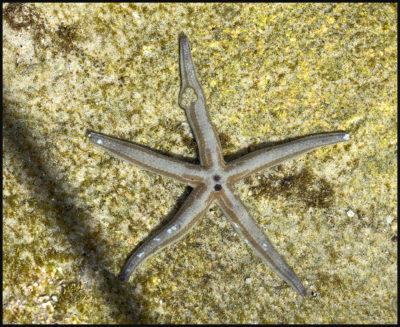
Beach combing find.
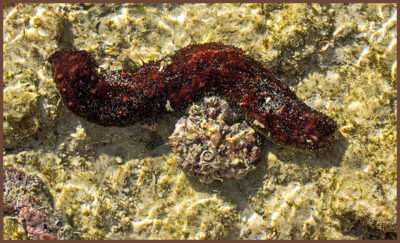
Colorful sea cucumber.
Down the coast, more beautiful, open beaches and free camping await. The wind abates after clearing the coastal bulge. Looks like some great beach camping there, but we decided to press on to the cape. The two big cities on the cape, Cabo St. Lucas and San José del Cabo are just that…big, touristy cities a la Cancún. We fled in horror toward Todos Santos, stopping in the Cabos only long enough to buy gas and bagels. Fortunately, we were late enough we needed to find camping before Todos Santos. After several forays off the highway we found an incredible spot at kilometer post #92 near a large bridge. Don’t miss it if you’re nearby. Sipping morning coffee while watching the breaching humpback whales, and the cruising Pacific gray whales was unbelievable. Sea lions were barking on an offshore island.
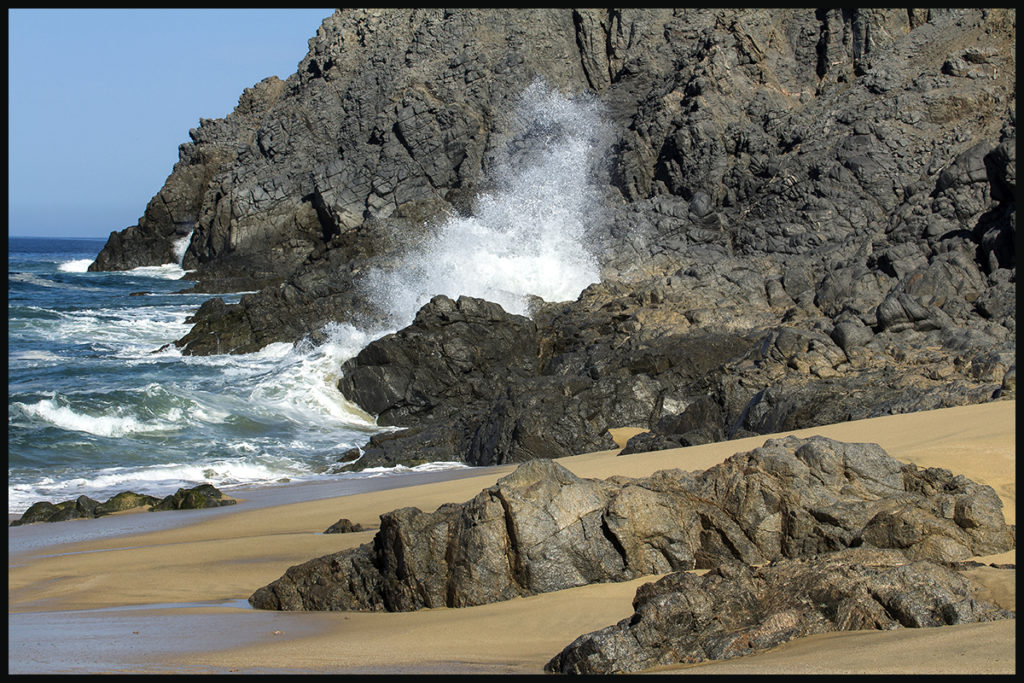
Kilometer 92 camping and surfing beach.

Vulture warming in the morning sun.
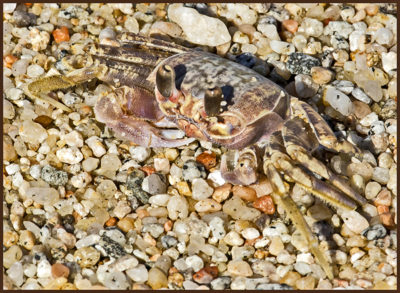
Camo beach crab: one of hundreds.
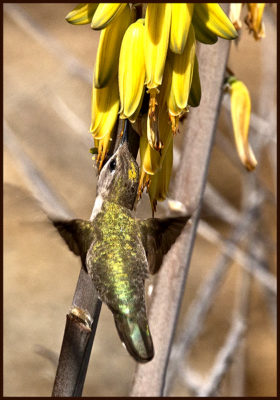
Breakfast for a Costa’s female.
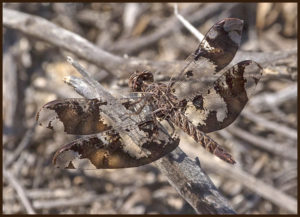
Filagree Skimmer

Busy beach art

Beach rocks at sunset with fog bank rolling in.
After clearing La Paz once again, we decided to try the Pacific coast road to the back entrance of Laguna San Ignacio which we had decided on for our whale watching experience. After assessing how much sand we might have to drive through we chickened out. Visited La Purísima before tackling the road over to Conception Bay. It’s a very tiny town without much to recommend it except for the surrounding scenery and camping/hiking opportunities.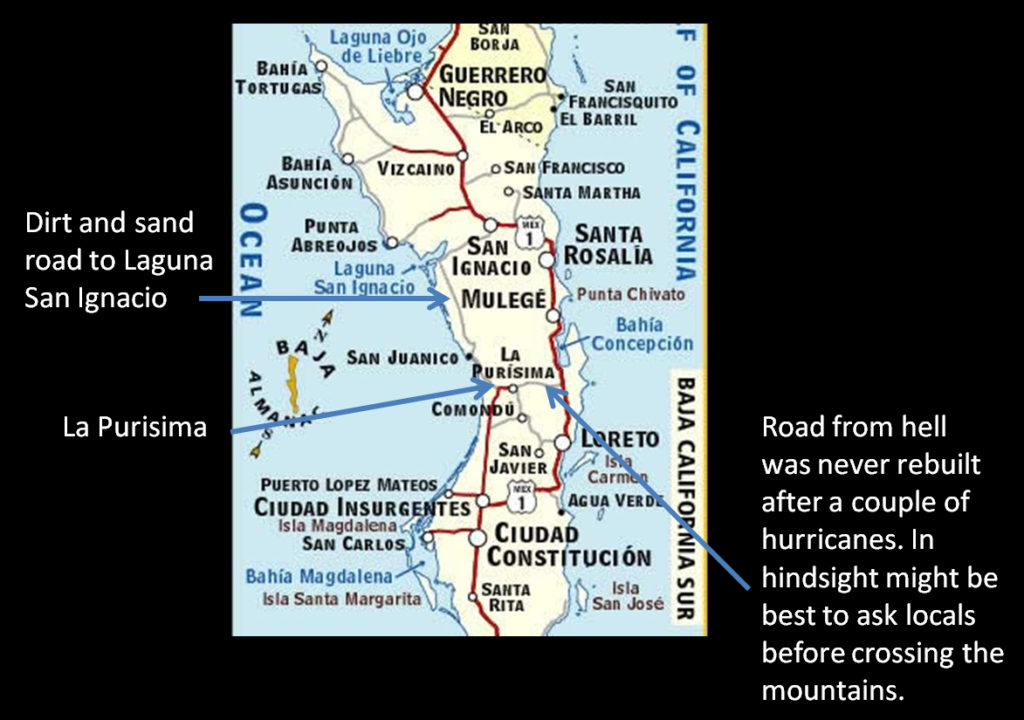
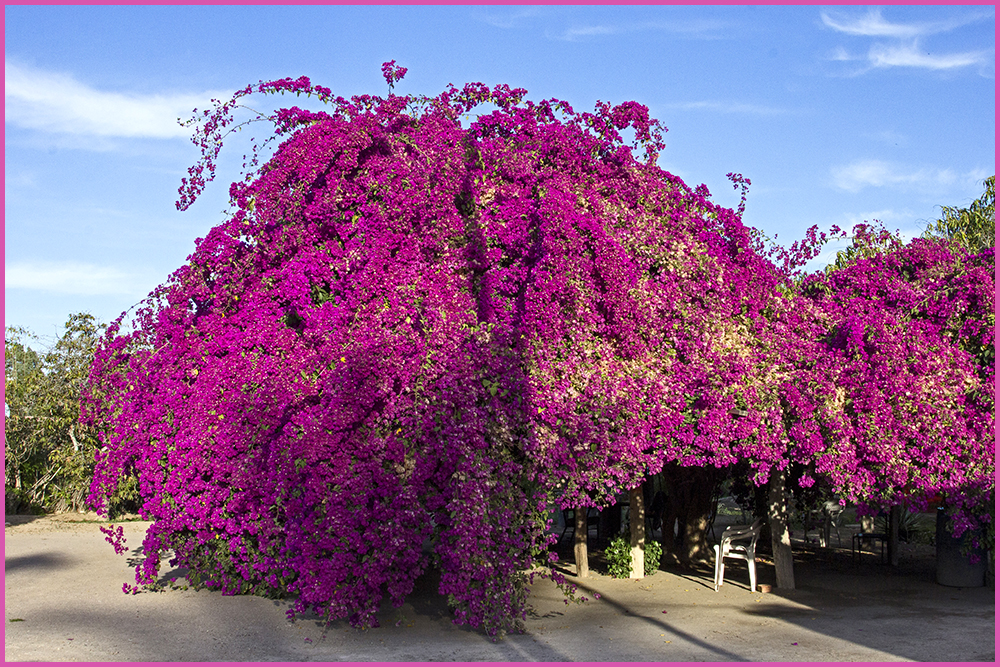
Bougainvillea provides street side shade in La Purísima.
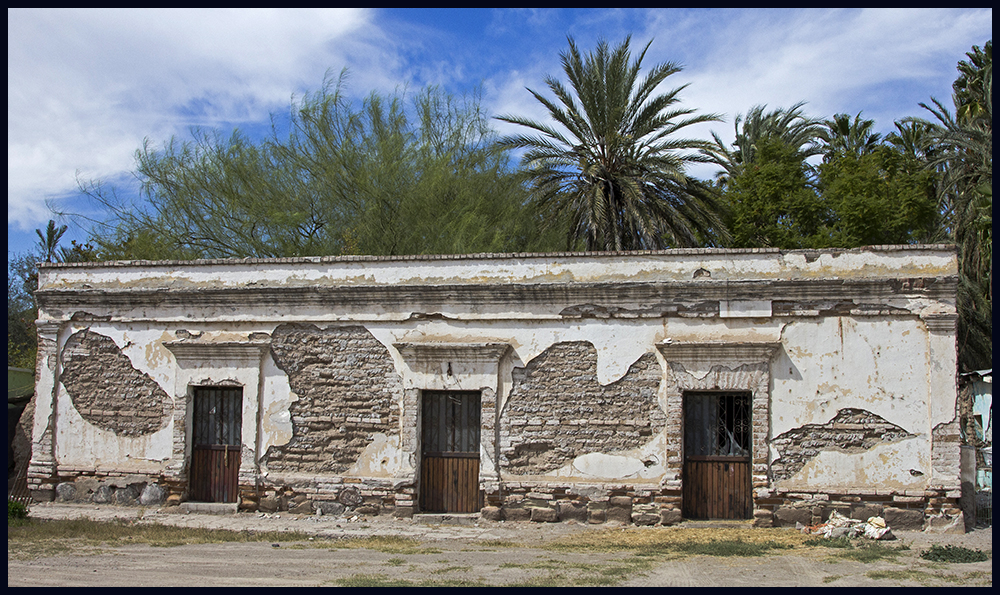
Abandoned building in La Purísima
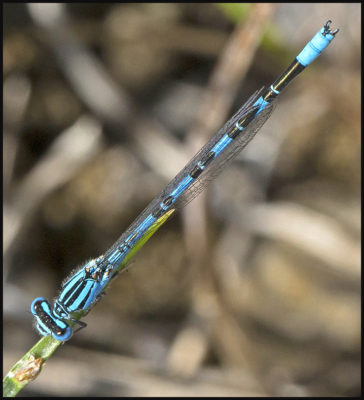
Damselfly at the river.
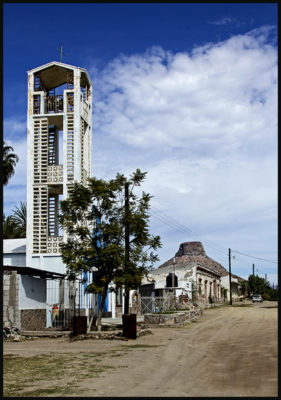
Church on the main street.
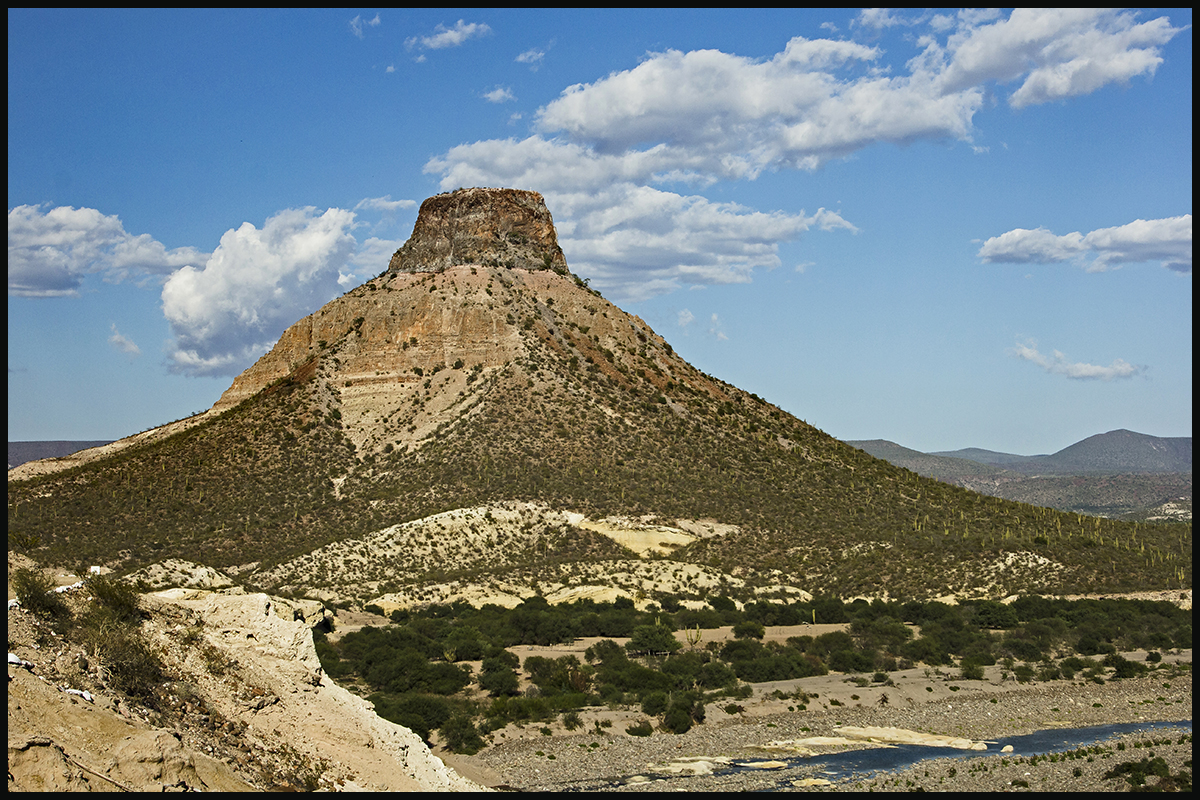
Volcanic core looming over the town.

Valley with lots of hiking trails.
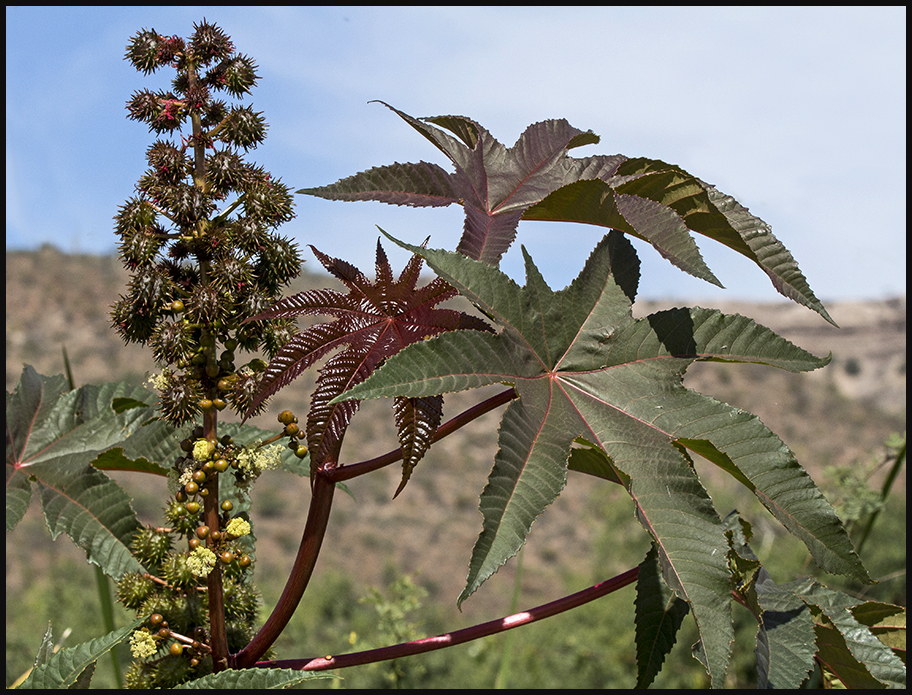
Castor bean plants are common along rivers and in jungles. Poisonous leaves and nasty burs keep animals from grazing them.
The road over the top to the gulf side, on the map, looks reasonable…but holy moly!!, there must have been two hurricanes since they graded that road! It was a 4WD adventure (nightmare) to remember.
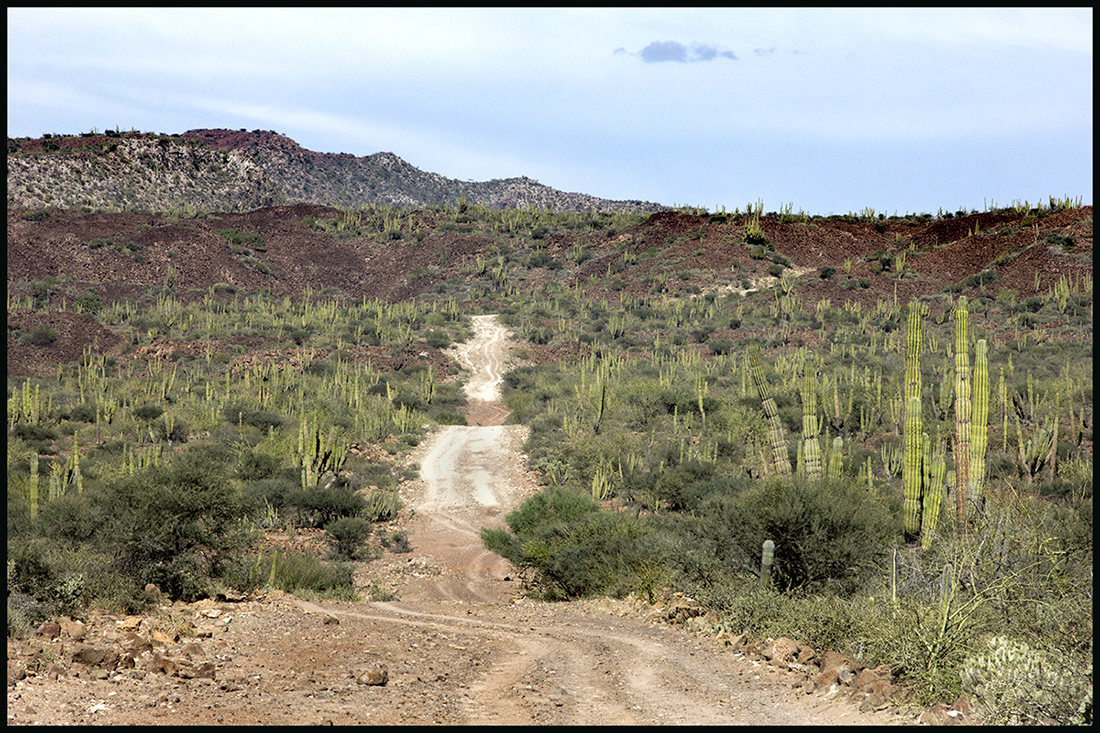
The road looks benign at first. It quickly deteriorates and becomes barely passable. The sand/beach road to San Ignacio didn’t look so bad after all, although it could have been worse?
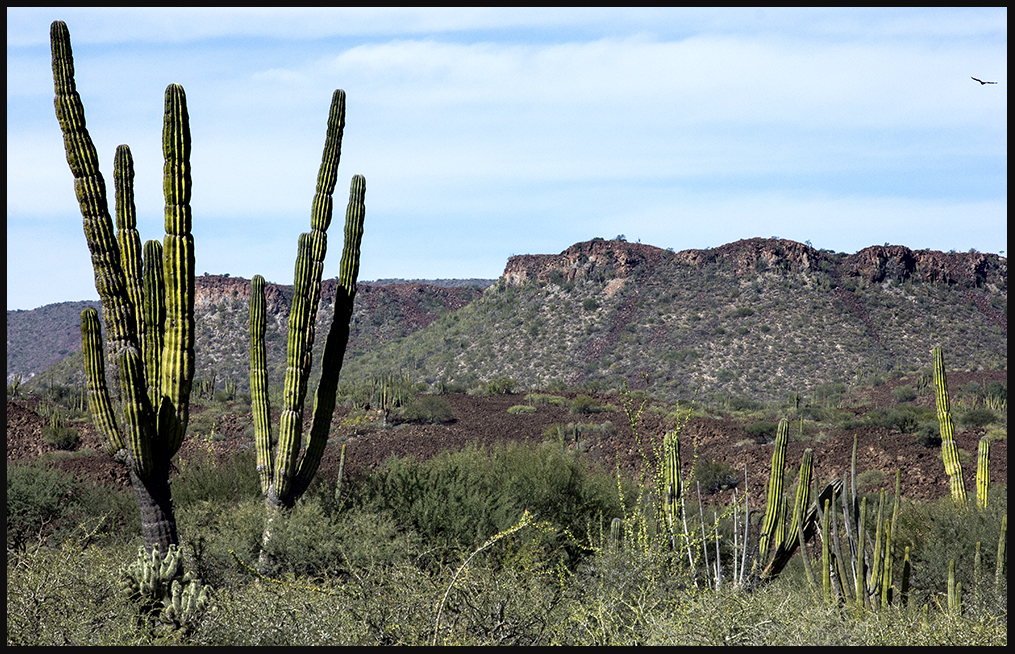
Desert views along the road over the top.
We camped on top and got rained on for the first and last time during the entire trip….fortunately, as it turned out, because we discovered the camper wasn’t waterproof. Oops. Add that to the fix-it list.
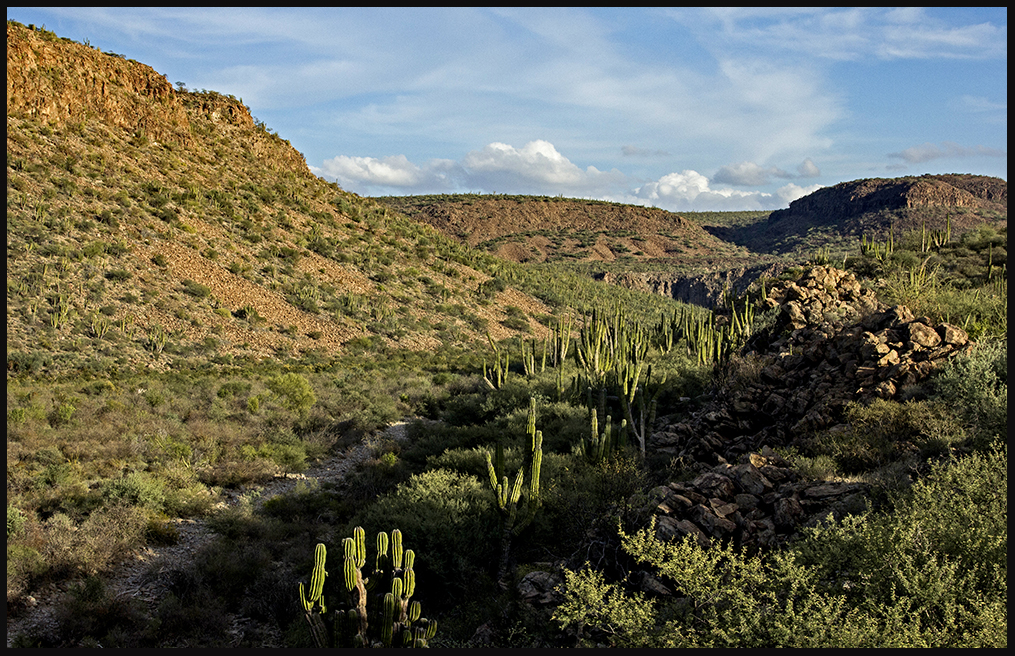
Valley near out chosen camp site.
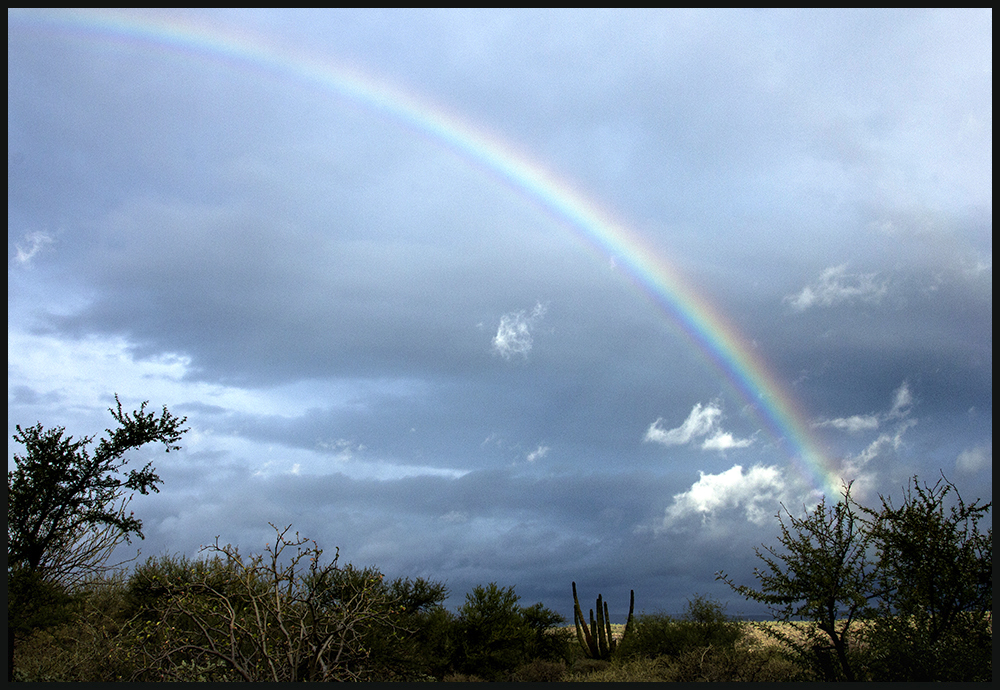
Morning rainbow on mountain top after a very soggy night. Road only got worse.
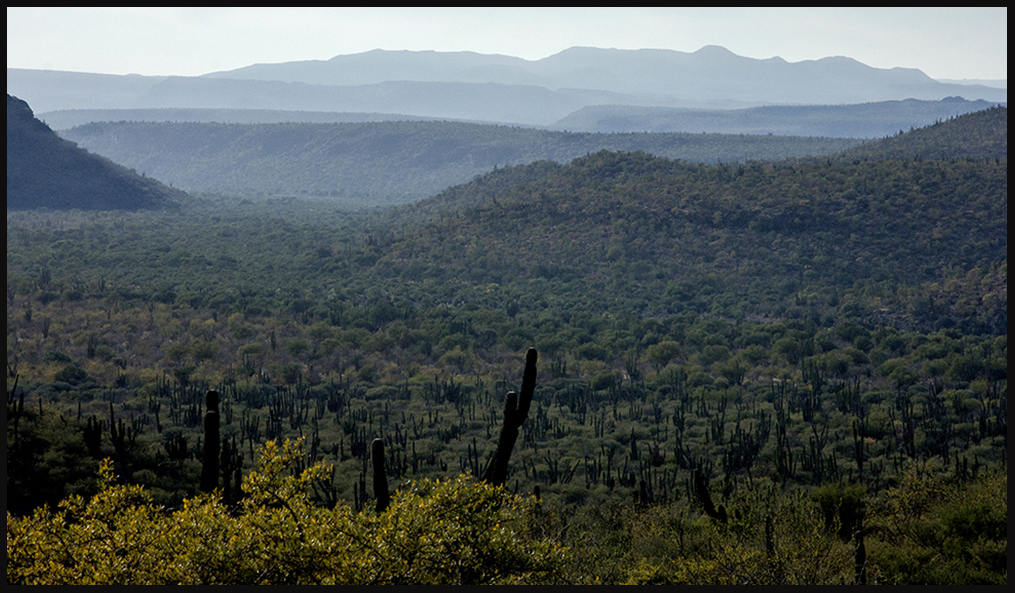
Scene from the top before dropping down to the gulf side and joining the Transpeninsular highway.
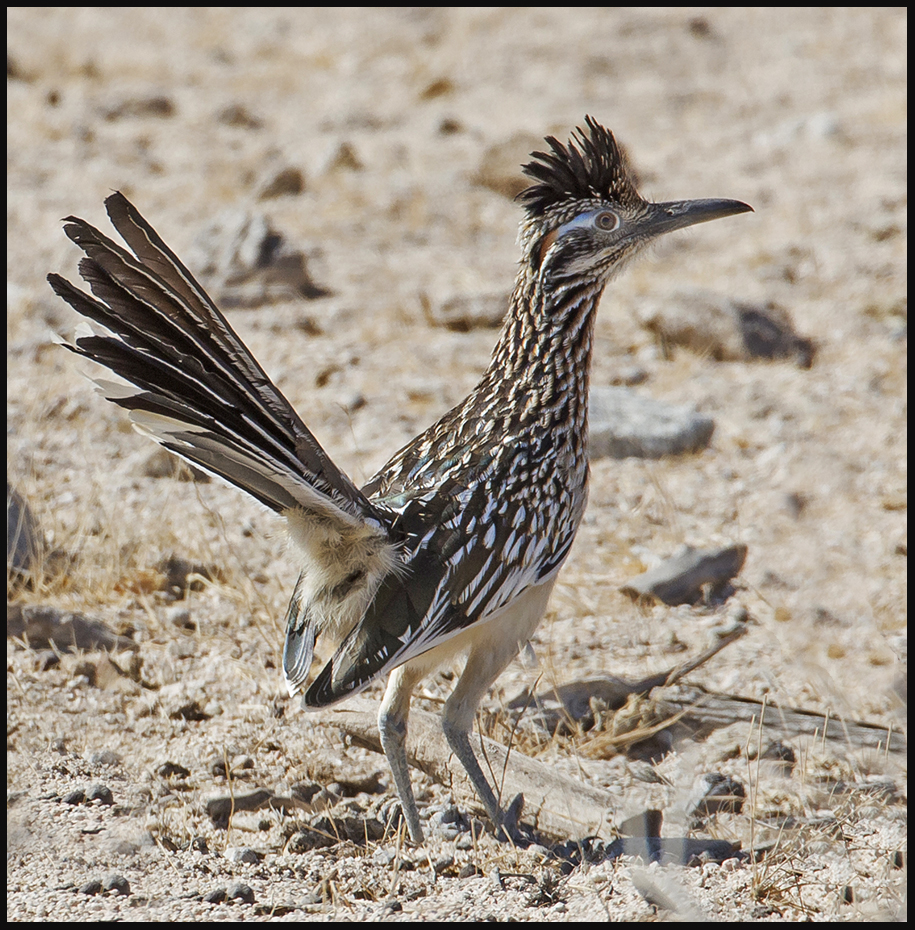
I’ll break here with a chipper little roadrunner.
In the next (and final) Baja post I’ll explain the whale watching opportunities.
